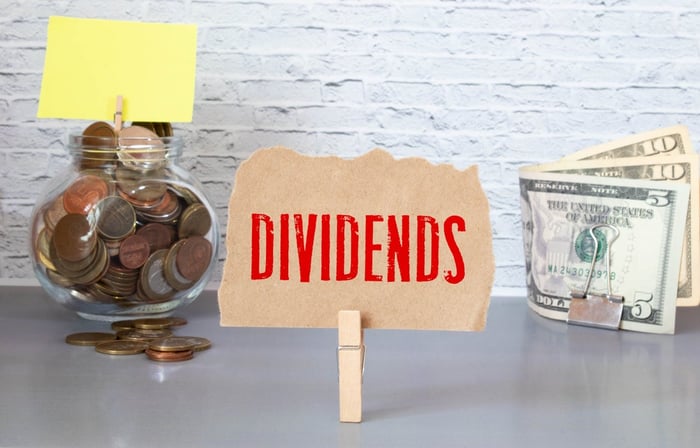2 Dividend Powerhouses to Buy Right Now

Key Points
PepsiCo yields 4.02% after 53 straight years of dividend increases, using snack and beverage dominance to pass inflation directly to consumers.
S&P Global's 0.71% yield looks tiny until you realize the 28.7% payout ratio leaves room for decades of double-digit growth.
From Doritos to credit ratings, these companies own assets that competitors can't replicate and customers can't do without.
Dividend investing splits into two camps: those prioritizing current yield, and those focused on growing dividends that compound over time. The smartest money doesn't choose sides, but recognizes both strategies have merit, focusing on companies with multidecade track records that control something essential.
These two dividend powerhouses operate in completely different industries, yet share the same superpower: They can raise prices faster than costs without customers defecting. One feeds your cravings, the other grades corporate debt, but both generate cash flows that turn patient investors into millionaires.
Where to invest $1,000 right now? Our analyst team just revealed what they believe are the 10 best stocks to buy right now. Learn More »

Image source: Getty Images.
The snack and beverage juggernaut
PepsiCo (NASDAQ: PEP) has turned salty snacks and sugary drinks into a dividend machine yielding 4.02%, backed by 53 consecutive years of increases. Its Frito-Lay unit commands more than half of the U.S. snack market, giving it leverage no retailer can ignore -- Doritos and Cheetos fly off shelves no matter how often prices tick higher. On the beverage side, Pepsi, Gatorade, and Mountain Dew extend that dominance across multiple consumer occasions.
The company's 7.03% five-year dividend growth rate looks remarkable, given a 99.9% payout ratio, but PepsiCo has mastered raising prices just ahead of input costs. In most industries, such a payout would be unsustainable, yet snack demand proves resilient even in recessions as consumers trade down from restaurants to packaged foods.
The pivot into baked chips and zero-sugar drinks isn't about optics; it's about capturing higher-margin, health-conscious dollars while core brands keep churning. The looming threat is GLP-1 weight-loss drugs curbing snacking, though early evidence suggests cravings for chips remain intact.
For income investors, PepsiCo delivers a rare blend: a yield twice the S&P 500 (SNPINDEX: ^GSPC) average, and growth strong enough to outrun inflation.
The financial data monopoly
S&P Global (NYSE: SPGI) yields only 0.71%, which keeps it off most income investors' radar. But with a 28.7% payout ratio and 8% five-year dividend growth rate, it's a compounding engine built for the long haul.
At its core is a government-sanctioned oligopoly: Companies cannot raise debt without paying S&P, Moody's, or Fitch for a rating. That tollbooth model makes revenue recession-resistant, since issuers must renew ratings regardless of the economy.
The reach goes far beyond ratings. S&P Global owns many of the indices that passive funds track, earning a fee every time an investor buys an S&P 500 ETF. Its Platts division shapes commodity pricing worldwide, while Capital IQ underpins financial analytics for banks and asset managers. Together, these franchises create multiple choke points on global capital flows.
Management deliberately keeps the yield low to reinvest in acquisitions and technology, widening the moat and seeding new growth. ESG scoring is the next frontier -- a fresh ratings category S&P can monetize as sustainable investing becomes standard.
The 0.71% yield won't cover monthly bills, but the company's 20-year total return has trounced most high yielders, proving the power of dividend growth compounding.
The yield versus growth dilemma
PepsiCo and S&P Global highlight the classic dividend trade-off: income today versus growth tomorrow. PepsiCo delivers a 4% yield right now, but has limited flexibility to accelerate, given its stretched payout ratio. S&P Global pays just 0.71% today, yet its low payout ratio and consistent growth suggest it could double or triple dividends over the next decade.
Owning both strikes the balance -- PepsiCo funds current cash needs, while S&P Global compounds quietly in the background. Together, they provide inflation protection through PepsiCo's pricing power and recession resistance through S&P Global's subscription model.
The deeper point is that both companies control assets that rivals can't replicate. PepsiCo owns shelf space and brand loyalty that force retailers to comply, while S&P Global's regulatory moat and network effects make it indispensable to capital markets.
Should you invest $1,000 in PepsiCo right now?
Before you buy stock in PepsiCo, consider this:
The Motley Fool Stock Advisor analyst team just identified what they believe are the 10 best stocks for investors to buy now… and PepsiCo wasn’t one of them. The 10 stocks that made the cut could produce monster returns in the coming years.
Consider when Netflix made this list on December 17, 2004... if you invested $1,000 at the time of our recommendation, you’d have $651,345!* Or when Nvidia made this list on April 15, 2005... if you invested $1,000 at the time of our recommendation, you’d have $1,080,327!*
Now, it’s worth noting Stock Advisor’s total average return is 1,058% — a market-crushing outperformance compared to 189% for the S&P 500. Don’t miss out on the latest top 10 list, available when you join Stock Advisor.
*Stock Advisor returns as of September 15, 2025
George Budwell has positions in PepsiCo. The Motley Fool has positions in and recommends Moody's and S&P Global. The Motley Fool has a disclosure policy.







